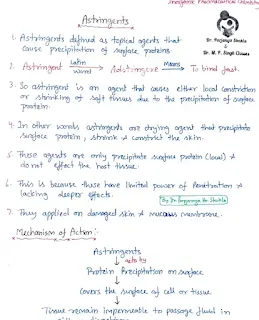Astringent Notes: Downloadable Resources (PDF & PPT)
Access comprehensive notes on astringents in both PDF and PPT formats. These resources cover the definition, uses, mechanisms of action, and various types of astringents used in skincare and medicine. Ideal for students, skincare enthusiasts, and healthcare professionals. Download now for convenient offline access and study.
Keywords: Astringent, Notes, PDF, PPT, Download, Skincare, Medicine, Topical, Tannins, Zinc Oxide, Witch Hazel, Aluminum Salts, Mechanism of Action, Protein Precipitation, Tissue Contraction, Oil Control, Wound Healing.
Astringents: Definition, Uses, and Mechanisms
Astringents are substances that cause the contraction or shrinkage of tissues and the drying up of secretions. They work by precipitating proteins on the surface of cells, leading to a tightening or constricting sensation. Astringents are commonly used in skincare and medicine for various purposes.
Mechanism of Action
The primary mechanism of action of astringents involves protein precipitation. When applied to the skin or mucous membranes, astringents interact with proteins on the cell surface and in the extracellular matrix. This interaction causes the proteins to coagulate or clump together. This process leads to several effects:
- Tissue Contraction: The precipitation of proteins causes the tissue to contract or shrink. This can help to reduce the appearance of pores, tighten skin, and reduce swelling.
- Decreased Secretions: Astringents can reduce secretions, such as oil, sweat, or mucus, by constricting the ducts of glands.
- Formation of a Protective Layer: The precipitated proteins can form a protective layer over the tissue, which can help to protect it from irritation and promote healing.
- Hemostasis (Stopping Bleeding): In minor cuts and abrasions, astringents promote blood clotting by constricting blood vessels and precipitating blood proteins.
Types of Astringents
Astringents can be classified based on their chemical composition and source. Common examples include:
- Tannins: These are naturally occurring polyphenolic compounds found in plants, such as witch hazel, tea, and oak bark. Tannins have strong astringent properties and are often used in skincare products.
- Metallic Salts:
- Zinc Oxide: A mild astringent with antiseptic and soothing properties. Commonly used in sunscreens, diaper rash creams, and acne treatments.
- Aluminum Salts: (e.g., aluminum chloride, aluminum acetate, aluminum sulfate) These are potent astringents used in antiperspirants to reduce sweating and in some topical medications to stop minor bleeding.
- Potassium Alum: Used in aftershave products for its styptic (bleeding-stopping) properties.
- Acids:
- Salicylic Acid: A beta-hydroxy acid (BHA) with keratolytic (exfoliating) and mild astringent properties. Used in acne treatments.
- Acetic Acid (Vinegar): Diluted vinegar can act as a mild astringent.
- Alcohols: Some alcohols, like ethanol and isopropyl alcohol, have astringent properties due to their ability to denature proteins and evaporate quickly, leaving a cooling and tightening sensation. However, high concentrations of alcohol can be drying and irritating to the skin.
- Witch Hazel (Hamamelis virginiana): A plant extract containing tannins. Widely used in skincare for its astringent, anti-inflammatory, and antioxidant properties.
Uses of Astringents
Astringents have a wide range of applications in skincare and medicine:
- Skincare:
- Oil Control: Astringents are often used in toners and cleansers for oily or acne-prone skin to reduce shine and tighten pores.
- Acne Treatment: Some astringents, like salicylic acid and witch hazel, can help to unclog pores and reduce inflammation associated with acne.
- Aftershave: Astringents can help to soothe razor burn, close pores, and prevent infection after shaving.
- Anti-Aging Products: Some astringents are included in anti-aging products to temporarily tighten skin and reduce the appearance of wrinkles.
- Medicine:
- Wound Healing: Astringents can help to stop minor bleeding, promote tissue repair, and protect wounds from infection.
- Treatment of Hemorrhoids: Witch hazel is a common ingredient in hemorrhoid treatments to reduce swelling and discomfort.
- Antidiarrheals: Some oral astringents (though less common now) were historically used to treat diarrhea by reducing intestinal secretions. *This use is generally discouraged now due to potential side effects and better alternatives.*
- Mouthwashes: Some mouthwashes contain astringents to help tighten gums and reduce inflammation.
Side Effects and Precautions
While generally safe for topical use, astringents can cause side effects, especially with overuse or in individuals with sensitive skin:
- Dryness: Overuse of astringents can strip the skin of its natural oils, leading to dryness, irritation, and flaking.
- Irritation: Some astringents, particularly those with high concentrations of alcohol or strong metallic salts, can irritate the skin, causing redness, burning, or itching.
- Sensitivity Reactions: Some individuals may be allergic or sensitive to certain astringents.
- Over-drying of Mucous Membranes (with oral use): This can lead to discomfort and potentially worsen certain conditions.
It's important to use astringents as directed and to choose products appropriate for your skin type and concerns. If you experience any adverse reactions, discontinue use and consult a healthcare professional or dermatologist.
Info!
If you are the copyright owner of this document and want to report it, please visit the copyright infringement notice page to submit a report.

